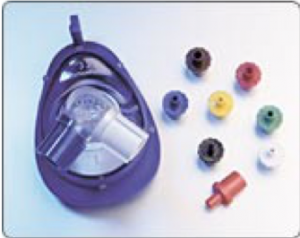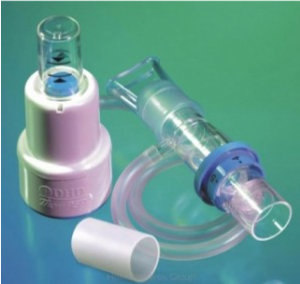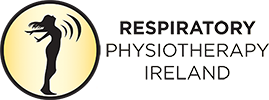Positive expiratory pressure (PEP) therapy involves breathing with a slightly active expiration against an expiratory resistance. The PEP device creates pressure in the lungs and keeps your airways from closing. By keeping your airways open secretions will be easier to cough up and clear.
PEP therapy gets air into the lungs and behind the mucus using extra (collateral) airways. It is used for:
- Clearance of excess secretions from the lungs
- Reducing gas trapping and improving ventilation of the lungs
During positive expiratory pressure (PEP), a person breathes through a mask or a handheld mouthpiece. PEP devices allow air to flow freely as you breathe in, but not when you breathe out. You must breathe out harder against the resistance. It takes about four times as long to breathe out against the resistance than it does to breathe in. This helps air get behind the mucus and helps move it from lung and airway walls. It also holds your airways open, keeping them from closing.
PEP therapy may be applied through:
- Face mask
- Mouthpiece

Face mask with a one-way valve to which expiratory resistors are attached. There is a range of coloured resisters and a manometer(pressure gauge). The manometer checks the pressure at which you breathe out. hen you breathe out through the mask, pressure builds up in your lungs, which helps to keep the airways open wide and also allows air to get behind the sputum so that it can be coughed up more easily.
Using the PEP mask
Your physiotherapist will show you how to use the mask. This guide is a reminder for you:
- Insert the correct size resistor to the expiratory port. The correct resistor is selected with help from your physiotherapists; you should maintain a pressure of 10- 20cm H2O during the majority of exhalation.
- Sit comfortably in an upright or leaning forward position
- Place the mask over your nose and mouth and produce a good seal around your cheeks
- Breathe in through your nose or mouth slowly (a slightly deeper than normal breath,but not a full deep breath) and hold for 2-3 seconds
- Breathe out actively but not forcefully
- Take 10-15 breaths as described above
- Huff twice either through the mask or without it (your physiotherapist will advise you which)
- Cough and clear your secretions
- Repeat as necessary up to 15 minutes per treatment session
Your physiotherapist will give give you written instructions including the technique, prescription and cleaning of the device.
 Mouthpiece PEP devices such as a therapep uses varying dials to apply expiratory resistance.
Mouthpiece PEP devices such as a therapep uses varying dials to apply expiratory resistance.
Therapep TheraPEP is an easy-to-use system for mobilising secretions with respiratory conditions, as well as patients recovering from surgery.
Using the Therapep
Your physiotherapist will show you how to use your therapep device. The proper settings selected by your physiotherapist allows you to perform needed therapeutic breaths. This guide is a reminder for you.
- Sit comfortably in an upright position
- The mouthpiece should be positioned well into the mouth, with an effective seal created by the lips
- The resistance is selected on the dial as advised by your physiotherapist
- Breathe in through your nose or your mouth (a slightly deeper than normal breath, but not a full deep breath)
- Breathe out actively but not forcefully through the mnouthpiece.
- Exhale for 3-4 seconds keeping the indicator between the black lines on the device Repeat 10-15 breaths as described above without losing the seal of the mouthpiece and as perscriped by your physiotherapist
- Huff and cough (if secretions are in the upper airways) to further mobilise and clear secretions
- Your physiotherapist will give give you written instructions including the technique, prescription and cleaning of the device
